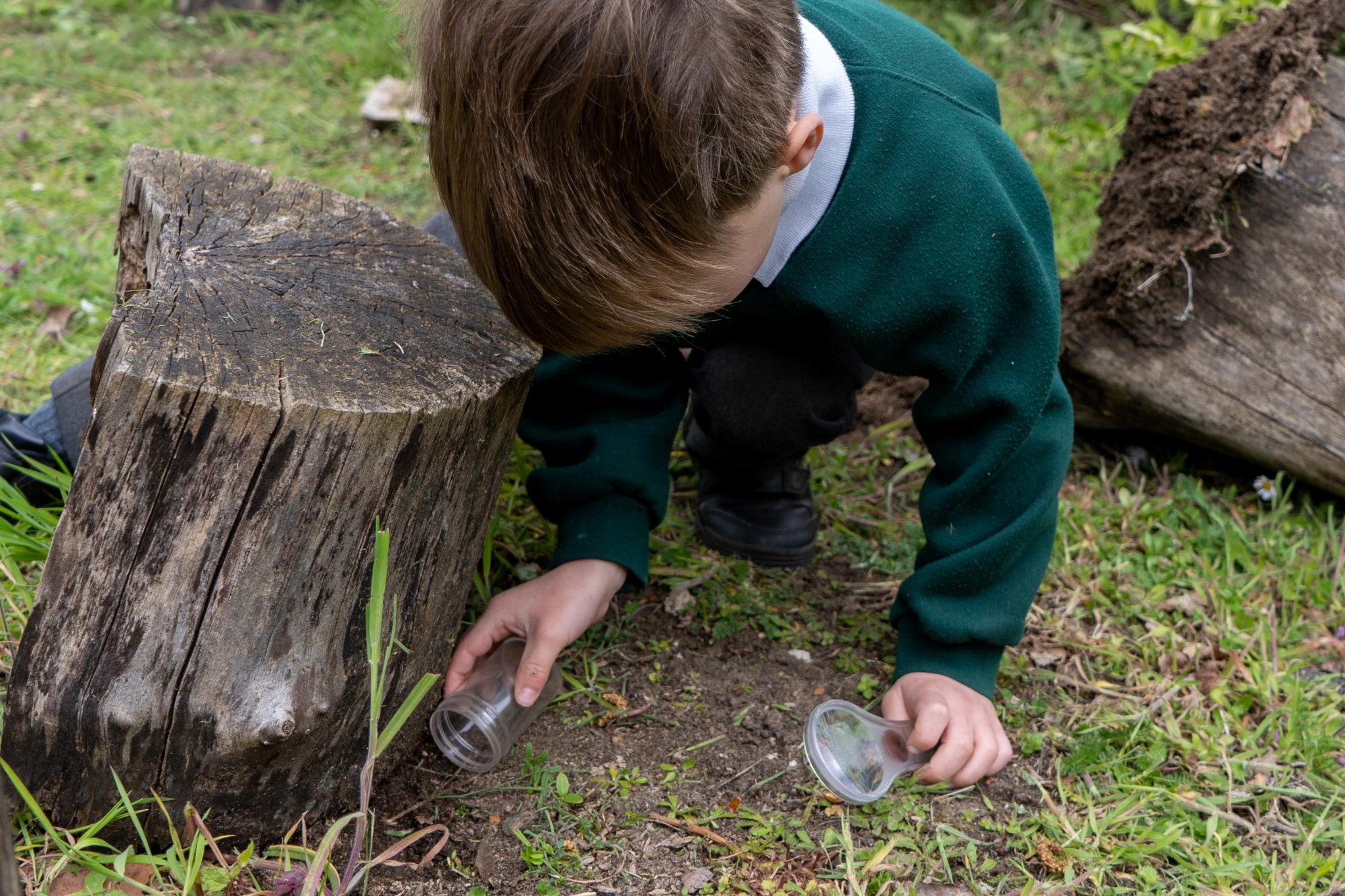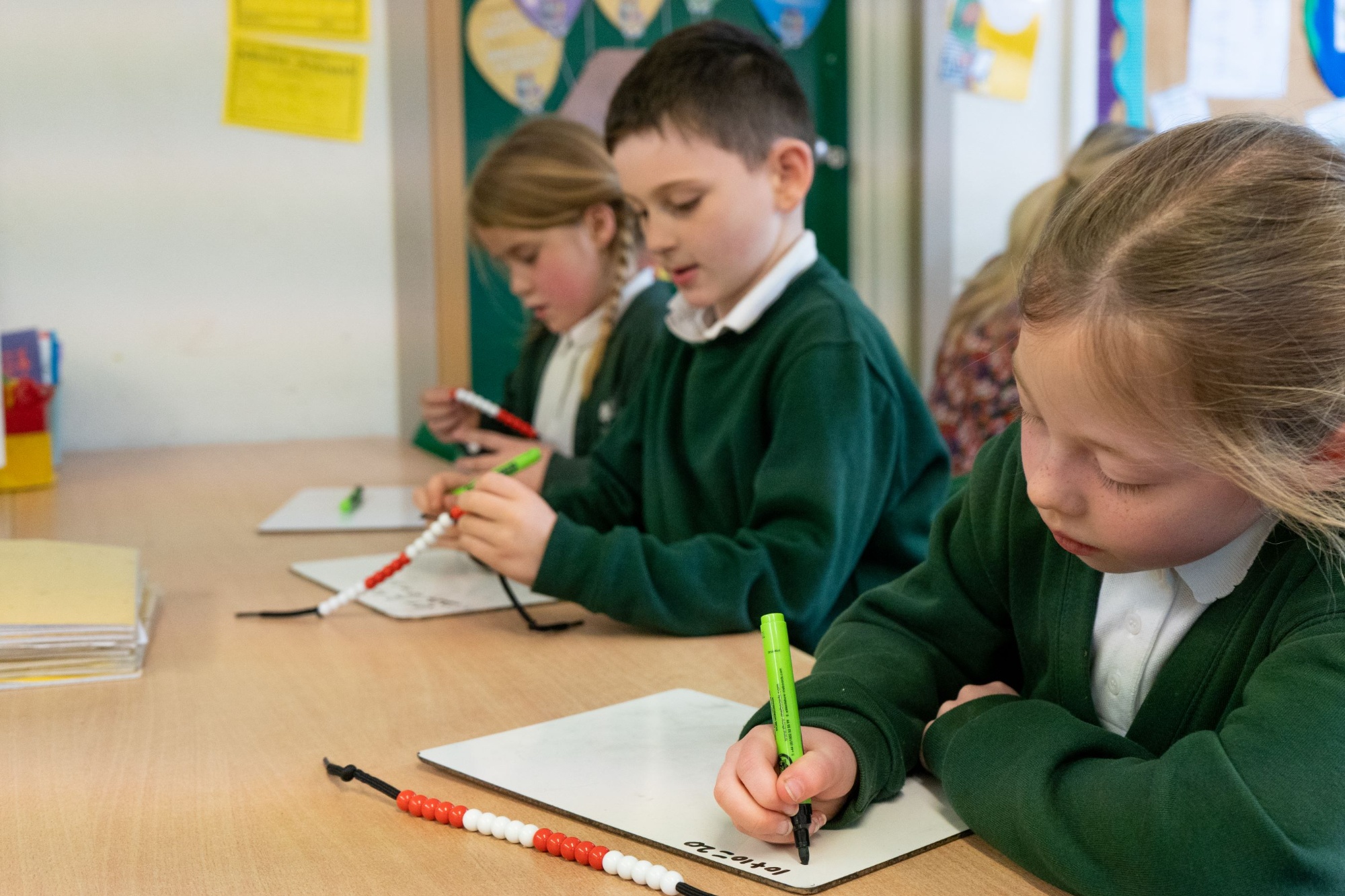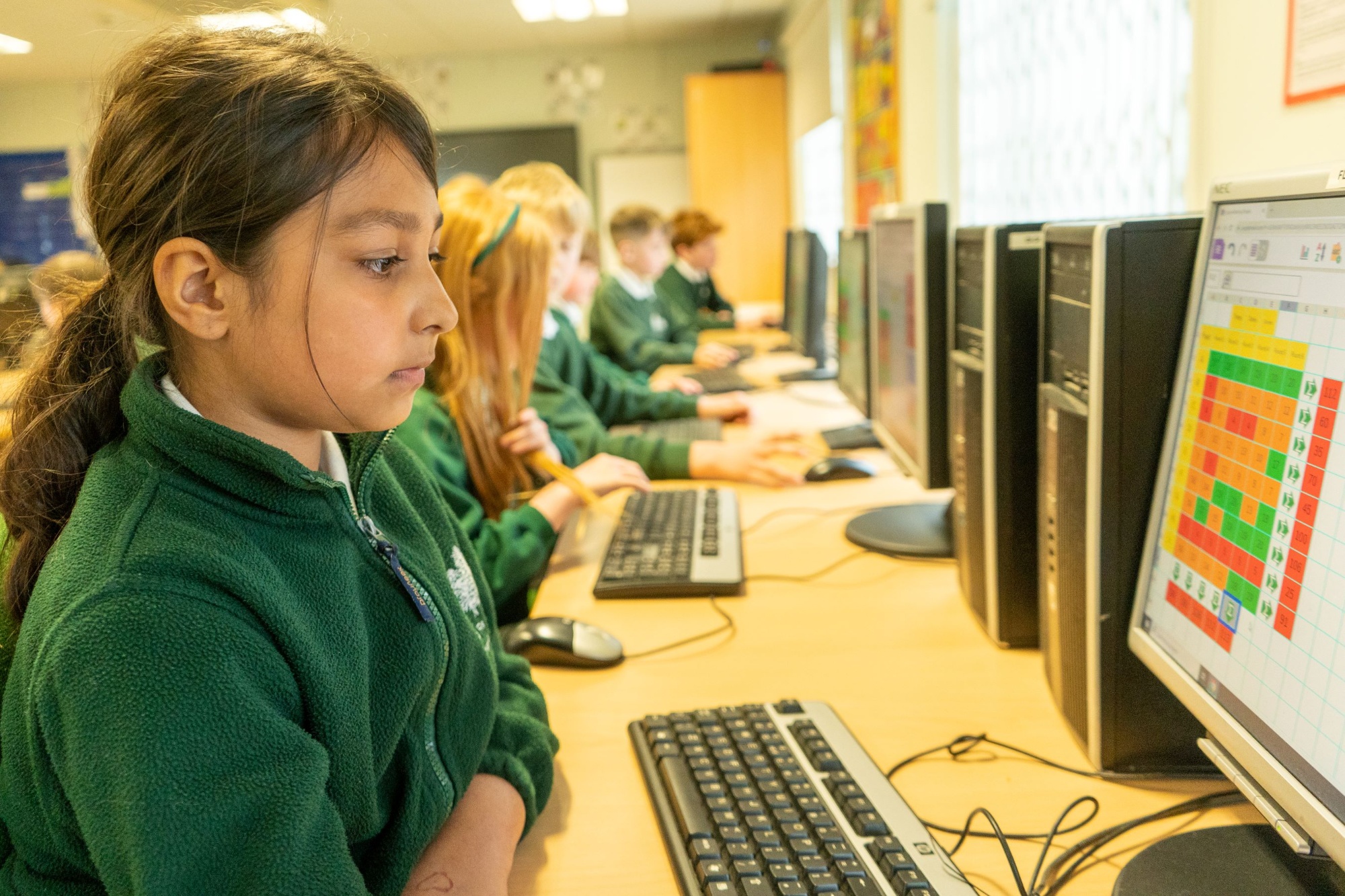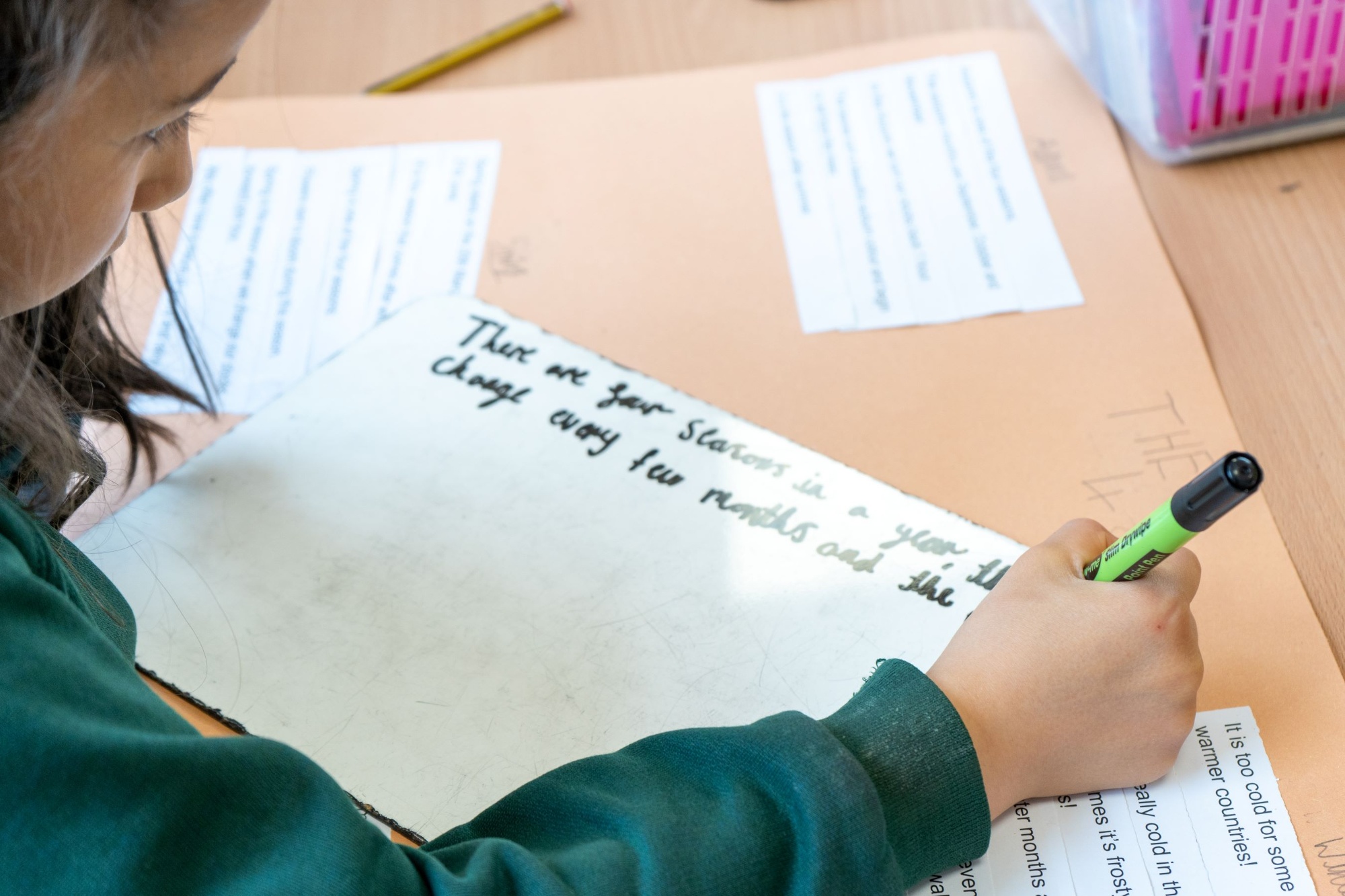Computing
Intent
Curriculum design at The Firs
In deciding on the intent behind the design of our curriculum it is our vision and values that are the starting point. See The Firs’ Curriculum Policy.
The key drivers behind the makeup of our curriculum are:
-
What we wanted to develop in a ‘Firs’ Mindset’ (which we defined as the values and approaches to life we wanted our children to live by and hold to).
-
The knowledge and skills we wished to develop in addition to those set out in the National Curriculum.
-
Any gaps in children’s knowledge, skills or awareness that we perceived, associated with the context of our local environment, location or general pupil characteristics.
-
Our understanding of what ‘Cultural Capital’ meant to us at The Firs and in each year group, how we could give children the chance to experience it.
All of the thinking behind these key drivers are set out in The Firs Scheme of Work.
We decided on an additional programme of learning, organised into a number of strands, that would complement the content from the National Curriculum. We have called these additional strands ‘The Firs’ Themes’.
The Computing Curriculum at The Firs
The following statement very accurately captures the importance of computing in terms of the vital contribution it makes to the delivery of a broad and balanced curriculum:
‘A high-quality computing education equips pupils to use computational thinking and creativity to understand and change the world.’
Computing programme of Study, DfE, 2013
Computing has deep links with mathematics, science, and design and technology, and provides insights into both natural and artificial systems. Computing also ensures that pupils become digitally literate – able to use, and express themselves and develop their ideas through information and communication technology – at a level suitable for the future workplace and as active participants in a digital world.
At The Firs, we believe that Computing is an integral part of preparing children to live in a world where technology is continuously and rapidly evolving, so much so that children are being prepared to work with some technology that doesn’t even exist yet. For this reason, we feel that it is important that children are able to participate in the creation of these new tools, to fully grasp the relevance of and possibilities flowing from emerging technologies, thus preparing them for the world of work.
The Computing in the National Curriculum expectations split the teaching and learning of Computing into three strands (Computer Science, Digital Literacy and Information Technology). Teaching of Computing, from Reception through to Year 4, utilises a combination of practical lessons and theory lessons, designed to promote discussion and nurture understanding, which are also relevant to other areas of the curriculum, such as PSHE. In devising the learning programme in computing we have the following aims:
Computer Science
-
To enable children to become confident coders on a range of devices.
-
To create opportunities for collaborative and independent learning.
-
To develop children’s understanding of technology and how it is constantly evolving.
Digital Literacy
-
To enable a safe computing environment through appropriate computing behaviours.
-
To allow children to explore a range of digital devices safely.
-
To promote pupils’ spiritual, moral, social and cultural development.
Information Technology
-
To develop children’s confidence to use ICT as a cross-curricular tool for learning.
-
To promote learning through the development of thinking skills.
-
To enable children to understand and appreciate their place in the modern world.
We plan opportunities for children to learn and develop life skills in an engaging and purposeful way. For example, in the ‘We are Vloggers’ topic Year 3 have fun creating some visual content and as part of it they learn about using Google search including:
-
Using more advanced search techniques, such as filtering search results by location and date
-
Showing how voice search works.
-
Demonstrating how to find more age appropriate results by adding ‘for kids’ or ‘for children’ to the end of a search query.
-
Understanding that ‘Google Safe Search’ is locked in place and reminding children what to do if they encounter any inappropriate content.
Through the use of tools such as ‘Scratch’ and ‘To Go’ and ‘To Code’ (Within ‘Purple Mash’) children gain a secure understanding of coding, learning about how to interpret, create and debug algorithms. They also develop logical reasoning and problem-solving in a creative way that relates to real life examples.
E-Safety is at the heart of our computing curriculum and is a common thread across the whole of the school. It is our responsibility to ensure that children know how to use technology safely, respectfully and responsibly and they are able to recognise unacceptable behaviour or situations where they may be unsafe.
Each year the whole school takes part in Safer Internet Day where children think about the technology they are using and how to stay safe whilst enjoying and making use of it.
The school also aims to support parents around this issue with guidance sent home and on our website and through the use of E-Safety parent workshops.
Our desire is to also develop children’s cultural capital through work in computing. For example in Year 1 as part of the ‘We are Collectors’ topic children have the opportunity to create a digital greetings card, linked with Mothers’ Day or Easter and in the ‘We are TV chefs’ they talk about TV chefs on television and produce short videos of themselves making a healthy meal or snack.
We aim to develop SMSC through our computing curriculum by:
-
Moral: helping children to understand their responsibilities in their use of technology. For example, the first focus on cyberbullying and its consequences (Year 2) and the way we should conduct ourselves using social media and the issues surrounding ‘fake news’ and how it can mislead people (Year 4).
-
Social: encouraging pupils to think about how ICT has become a part of how our society functions today and how we communicate with each other. For example, as part of ‘We are presenters’ children think about the importance of sport coverage on TV and the large numbers of people who are involved in making and distributing it. Children watch examples and look carefully at the different camera techniques, listen to the commentary and look out for other information, such as scores and the way they are presented. They go on to make their own video of a sporting activity in school. (Year 3)
-
Cultural: opportunities to learn about aspects of the culture they are part of as part of the computing curriculum. For example, in ‘We are Painters’ children investigate illustrations in traditional stories and work creatively to create their own illustrations for a traditional tale. (Year 1)
We also aim to promote ‘British Values’ through Computing, by looking at the need to have rules of conduct and respect the rights and needs of others in the way we use ICT and the internet.
Implementation
During 2019-2020 our computing curriculum was carefully redesigned, focussing on ensuring there was a progression in skills and knowledge from lesson to lesson and year to year. Year group objectives have been created in The Firs Scheme of Work in order to support this and to form the basis for assessment.
In order to develop the Computing and ICT capability and understanding of each child, we will provide through our planning:
-
A Computing lesson each week.
-
Computing through all three strands taught within the classroom.
-
Continuity throughout the school to ensure that experience and skills are developed in a cohesive and consistent way.
-
Access to PCs, chromebooks and other devices within class or in the ICT suite.
-
Experience of a variety of well-planned, structured and progressive activities.
-
Experience of cross-curricular links to widen children’s knowledge of the capability of computing including safe use of the Internet and other digital equipment.
-
Opportunities for children to recognise the value of computing and ICT in their everyday lives and their future working life as active participants in a digital world.
-
A range of equipment such as Interactive whiteboards and ‘Clever Touch’ devices will also be used in the classrooms to enrich the learning in other areas of the curriculum.
-
Children will be introduced to computers and a range of digital devices in Saplings and reception to develop their confidence and familiarity with ICT tools.
-
Children will be given the experience of using the internet, email and other multimedia sources, with a strong emphasis on E safety.
Subjects are taught discretely, however staff make meaningful links across subjects where appropriate. For example, in Year 4 children create a presentation connected with their work on The Romans in history. They add pictures and and arrange the text around them. They check spellings and punctuation, work on creating an impressive title page and add special effects eg. audio clips, transition movements, hyperlinks etc.
Areas of learning are revisited year on year, so pupils progressively build their skills and knowledge and can link prior skills and knowledge to new learning, to deepen their understanding. For example, in Year 1 as part of the ‘We are treasure hunters’ topic, children use simple algorithms including ‘forwards’ ‘backwards’, ‘turn left’ and ‘turn right’ etc. to develop a simple grasp of basic coding. In Year 2 children begin to use the ‘Repeat’ command and debug simple algorithms. In Year 3 and Year 4, children are introduced to ‘Sprites’ (an object that can be moved in ‘Scratch’ and other software) they learn, with increasing independence, to make sequences of algorithms and debug these more complex sequences of instructions.
All children receive a dedicated computing lesson over the course of the week in the ICT suite but also have the opportunity to use chrome books in their classroom to support other areas of the curriculum. Children are also confident using the Clevertouch board in the classroom for all subjects across the curriculum.
Internet Safety:
Internet access is planned to enrich and extend learning activities across the curriculum. However, we have acknowledged the need to ensure that all pupils are responsible and safe users of the Internet and other communication technologies both in school and outside. The Acceptable Use and E Safety Policy sets out the approach and responsibilities for ensuring safe Internet use.
A page in the Safeguarding and child protection section of our website gives parents more information on e-Safety. Read more by following this link to our - ESafety page.
Impact
In order to measure the impact of the computing curriculum, we use a range of formative and summative assessment in all lessons such as:
-
Questioning
-
Observations/learning walks/drop ins
-
Looking at children’s written work
-
Feedback from staff and children
-
Analysis of our assessment tool linked to Scheme of Work objectives/National Curriculum for each year
Assessment information is collected and analysed by the subject leader using the school Computing Assessment template, as part of our monitoring of teaching and learning. This process provides us with an understanding of the quality of education in history as well as indicating areas for development.




